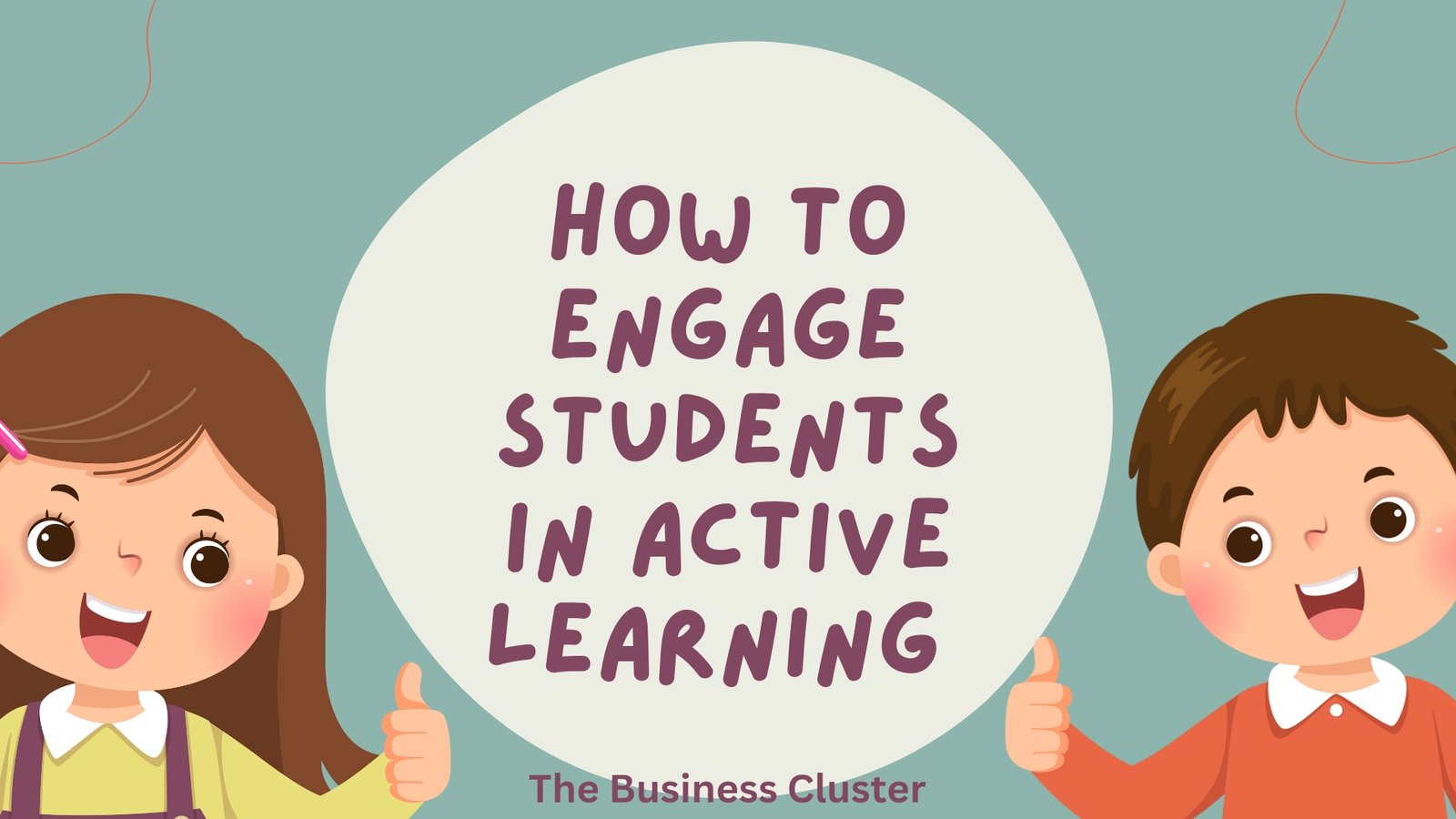

How to Engage Students in Active Learning?
Engaging students in lessons is one of the most rewarding challenges teachers face. Active learning—a student-centered approach—encourages critical thinking, collaboration, and creativity. Unlike traditional lectures, it places students at the heart of the learning process. Here, we’ll explore strategies to make every lesson interactive, ensuring students stay involved and motivated.
What Is Active Learning?
Active learning involves methods where students actively participate in the lesson. Instead of passively listening, they solve problems, discuss ideas, or collaborate in small groups. This approach transforms the classroom into a lively environment where students build a deeper understanding of concepts by doing rather than just observing.
But why does active learning work? It taps into how the brain learns best—through engagement, reflection, and application.
Special Offer for All Teachers Click Here.

Also, read tips to be a confident teacher. Click here to read our blog.
Strategies to Engage Students
1. Think-Pair-Share
This simple method starts with a thought-provoking question. Students think individually, then discuss their ideas with a partner. Finally, they share insights with the class. It’s easy to implement and encourages participation from even the shyest students.
2. Socratic Questioning
Encourage critical thinking by asking open-ended questions. For instance, instead of “What is the capital of France?” ask, “Why do capitals hold political significance?” This method pushes students to analyze and articulate their thoughts while fostering lively discussions.
3. Game-Based Learning
Games make learning fun. Incorporate quizzes, puzzles, or educational tools like Kahoot! or Prodigy. These platforms turn lessons into challenges that keep students engaged while reinforcing key concepts.
4. Peer Teaching
Assign students a topic and have them teach it to their peers. Preparing to teach boosts their understanding, and sharing knowledge builds confidence.
5. Role-Playing
Bring lessons to life by assigning characters or scenarios. For example, during a history lesson, students could reenact a historical debate. This hands-on method promotes empathy and deepens understanding.
6. The Pause Procedure
Pause periodically during lectures to let students process information or discuss in groups. This small break improves retention and keeps energy levels high.
7. Muddiest Point
Ask students to write down what they found most confusing during the lesson. Addressing these points in the next class ensures no one is left behind.
8. Stump the Teacher
Students form groups and create challenging questions on the lesson topic. Teachers attempt to answer, but if they’re stumped, the students win! This playful competition motivates students to dig deep into the material.
Overcoming Challenges
Some students might resist active learning, finding it uncomfortable compared to passive note-taking. To address this:
- Explain the Benefits: Share how active learning enhances their skills and future readiness.
- Start Small: Gradually introduce active techniques, like brief discussions or quick quizzes.
- Be Consistent: Regular activities build familiarity and reduce anxiety over time.
It’s also essential to create an inclusive environment where mistakes are seen as learning opportunities. This reduces the fear of judgment and encourages participation.
Want to build your career in Teaching? You can click here to get updates regarding the teaching jobs.
Benefits of Active Learning
Active learning fosters better understanding, critical thinking, and teamwork. It encourages students to take ownership of their education, making lessons memorable and impactful. Research shows that students engaged in active learning outperform peers in traditional classrooms, demonstrating higher retention rates and problem-solving skills.
Conclusion
So, what have we learned today? Active learning isn’t just a teaching method—it’s a mindset. By incorporating these strategies, you can create lessons that resonate with every student, helping them learn and grow in ways they’ll carry forever.
If you’re ready to transform your classroom into an engaging and dynamic learning environment, why not give these techniques a try? Whether you’re starting with think-pair-share or diving into game-based learning, remember—you’re not just teaching; you’re inspiring.
Ready to implement these strategies? Contact us for resources, training, or tools to make active learning a breeze in your classroom!
Barkha Sachdeva is a B.Com(Hons) graduate from Delhi University. Passionate about crafting content, she enjoys writing about fashion, beauty, technology, and travel. With three years of content writing experience, she possesses valuable insights and ideas in these domains.







Post Comment